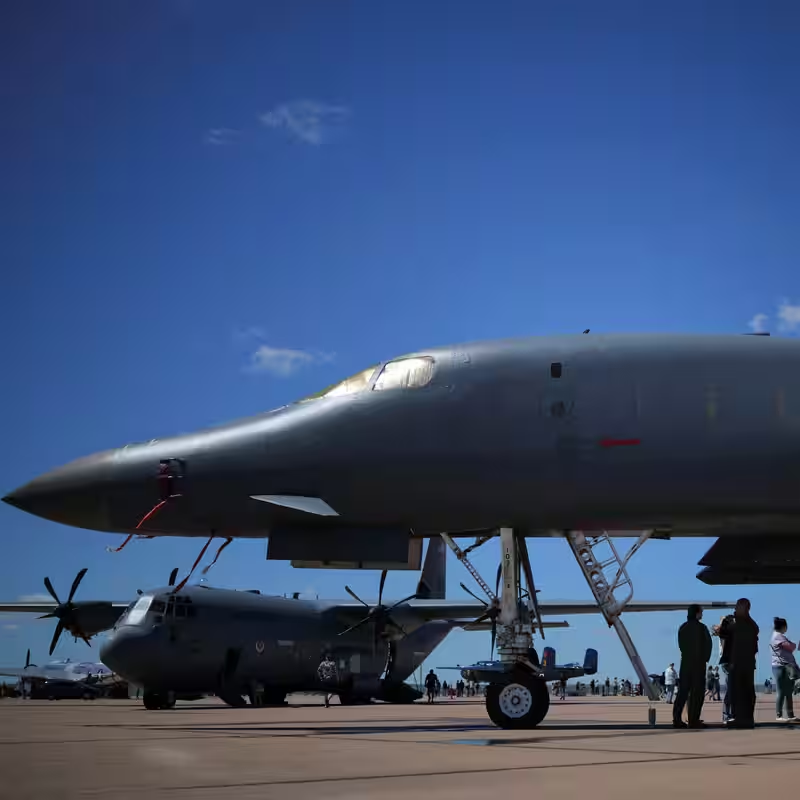U.S. B-1 Bombers Fly Near Venezuelan Airspace
In a high-profile demonstration of military readiness, U.S. Air Force B-1B Lancer bombers conducted flights near Venezuelan airspace this week, according to defense officials and flight-tracking data. The move comes amid rising regional tensions and signals a clear message of deterrence from Washington toward the Maduro regime .
Why B-1 Bombers Matter
The B-1B Lancer—nicknamed the “Bone”—is one of the most formidable aircraft in the U.S. nonnuclear arsenal. Capable of carrying up to 75,000 pounds of guided and unguided munitions, it holds the record for the largest conventional payload of any bomber in the Air Force . Though retired from nuclear missions, its speed, range, and firepower make it a strategic asset for rapid response operations.
These supersonic-capable bombers can fly intercontinental missions without refueling and are often deployed to project U.S. power in volatile regions—from the Middle East to the Indo-Pacific and now, Latin America.
Flight Details and Regional Reaction
On October 22–23, 2025, two B-1Bs were tracked flying south from their base in South Dakota, refueling midair over the Caribbean before approaching Venezuela’s declared air defense identification zone (ADIZ). They did not enter sovereign Venezuelan airspace but remained just outside it, in international airspace, for several hours .
Caracas responded swiftly. Venezuelan Defense Minister Vladimir Padrino López condemned the flights as “provocative” and “a threat to national sovereignty,” while state media accused the U.S. of rehearsing for regime change. Meanwhile, regional allies like Colombia and Brazil called for de-escalation.
Strategic Context Behind the Mission
While the Pentagon described the mission as a “routine training exercise,” analysts see it as part of a broader strategy to counter growing Russian and Iranian influence in Venezuela. Recent intelligence reports indicate Moscow has deepened military cooperation with Caracas, including drone shipments and personnel deployments .
“Flying B-1s near Venezuela isn’t just about showing off hardware—it’s about reminding adversaries that the U.S. can strike quickly and decisively if needed,” said Dr. Elena Ruiz, a defense analyst at Georgetown University.
B-1B Lancer at a Glance
| Feature | Specification |
|---|---|
| Max Payload | 75,000 lbs (34,000 kg) of conventional munitions |
| Top Speed | Mach 1.25 (950 mph) |
| Range | Approx. 7,456 miles (unrefueled) |
| Crew | 4 (pilot, co-pilot, 2 weapons systems officers) |
| Nuclear Role | Retired in 1995; now conventional-only |
| Current Fleet Size | ~45 active aircraft (out of 100 built) |
What Comes Next?
The U.S. Southern Command (SOUTHCOM) has not announced future bomber missions, but officials say such “dynamic force employment” will continue as part of regional security posture. With Venezuela’s political instability and humanitarian crisis persisting, and with elections looming in 2026, Washington appears intent on maintaining pressure without direct intervention.




